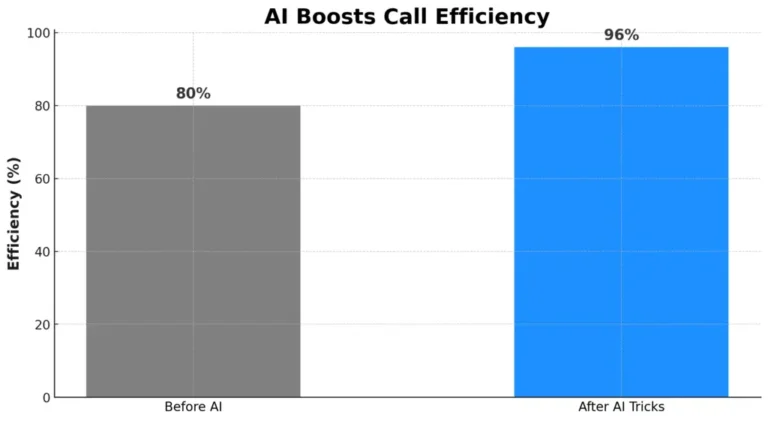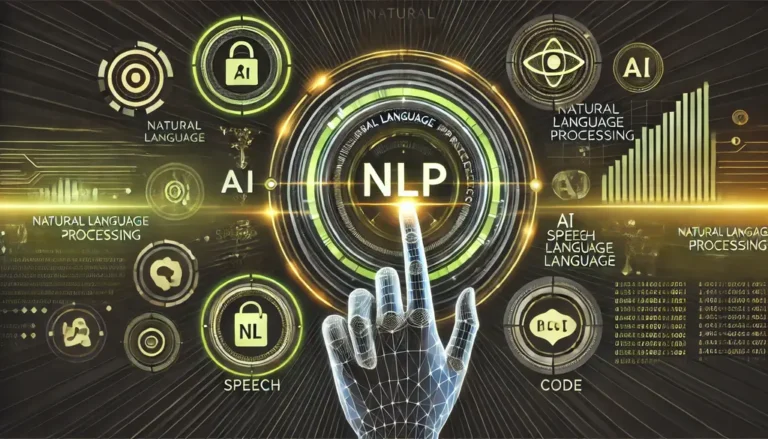The old way of doing business was all about manual effort. Every call, every form, and every data entry point required a person to handle. It was a model that worked. However, it was also slow and prone to error. Now, in 2025, AI voice is changing the way businesses operate. It is automating critical workflows. It not only saves time and money, but it also sets the stage for a new era of efficiency and growth.
What Is an AI Voice for Businesses?
AI voice is a technology that uses speech recognition and artificial intelligence. It handles spoken interactions automatically.
It removes the need for a person to answer every call, respond to every query, or log every note. An AI voice system can do these tasks automatically. It listens. It understands. It responds in natural, human-like language.
An AI voice is more than a pre-recorded message. It can answer customer questions. It can route calls to the right department. It can schedule appointments and update a company’s CRM in real time.
For businesses, AI voice reduces repetitive work. For customers, it creates faster and smoother experiences. In 2025, companies of all sizes are using AI voice. It improves efficiency and frees employees to focus on meaningful tasks.
How AI Voice for Businesses Saves Manual Work
For businesses, manual, repetitive tasks are a huge drain on resources. AI voice technology is changing this by automating key business functions. This frees up employees to focus on what matters most.
Automated Customer Service Interactions
AI voice agents can handle a huge volume of customer calls. They work around the clock. They can answer common questions, provide order updates, and resolve simple issues. This eliminates long wait times for customers. It also reduces the burden on your human agents. Your team can focus on complex problems that require a human touch and empathy. This leads to higher customer satisfaction and improves employee morale.
Intelligent Call Routing
AI voice systems act like a smart receptionist. When a customer calls, the AI quickly understands their needs. It doesn’t just send them to a department based on a simple menu. But also routes the call to the best-qualified agent.
The AI can also check the customer’s history to ensure a quicker resolution. It reduces the number of transfers and creates a more personalized experience. Intelligent call routing saves time for both customers and employees.
Automated Data Entry & CRM Updates
Data entry is often slow and prone to errors. During a sales call, AI listens to the conversation. It pulls out key details such as names and contact information. The system updates the CRM in real time. This removes the need for manual notes. It reduces human error. Records stay accurate. Teams can move quickly from one call to the next. As they know, their data is being handled for them.
Meeting Transcription & Summarization
Meetings are a major part of business. But they often create a new manual task: creating minutes. AI voice assistants can attend meetings as a virtual participant. They transcribe the whole conversation. They identify who said what. Then, they create a concise summary. This summary can include key insights and decisions. It can also list action items and who is responsible for them. This saves countless hours on manual note-taking. It also ensures no important detail is ever missed.
Voice-Controlled System Operations
AI voice is being built into internal business systems. A warehouse manager can use a voice command to check inventory levels. A doctor can update a patient’s record just by speaking. This hands-free operation saves a lot of time and reduces the risk of human errors. By using voice-controlled system operations, businesses can make the processes more intuitive and efficient.
Automated Outbound Notifications
Routine notifications include appointment reminders or billing alerts. Traditionally, this process is labor-intensive. Voice AI systems can now make thousands of personalized calls instantly. The AI can call a customer to confirm an appointment. It can also notify them of a past-due bill. If a customer has a question, the AI can often provide an answer. It can also seamlessly transfer the call to a human agent. This all happens without anyone having to dial a number. This automation keeps customers informed and saves your team countless hours.
Real-time Agent Assistance
A typical customer support call involves multiple tasks simultaneously. An agent must listen to the customer, search for information, and take notes. AI voice technology acts as a real-time “co-pilot” for human agents. As a conversation happens, the AI listens. It instantly pulls up relevant information on the agent’s screen, such as a customer’s account history, a knowledge base article, or a suggested response to a challenging question. This instant support makes agents more confident and efficient. It leads to faster problem resolution and a better customer experience.
Automated Quality Assurance & Compliance Monitoring
Ensuring quality and compliance is a massive manual task. Supervisors used to listen to every call to ensure quality and compliance, which is not feasible for humans. So, many interactions went unreviewed. AI voice systems can now monitor all incoming and outgoing calls. They can automatically analyze every conversation for key metrics. This includes whether an agent followed a script or not. It can also check for the tone of the agent. It can even make sure a legal disclosure was mentioned. If the AI finds a compliance risk, it flags the call. It sends it to a supervisor for immediate review. This ensures consistent service. It also provides a safety net for businesses in regulated industries. It drastically reduces the risk of a compliance violation.
Streamlined Internal Support
AI voice is not just for external customers. It is also a paradigm shift for internal operations. Many employees spend valuable time searching for company information, resetting passwords, or navigating complex HR procedures. An AI voice assistant can serve as an internal help desk, available 24/7. Employees can simply use their voice to ask questions. For example, “How do I request time off?” or “What’s the Wi-Fi password?” The AI provides an instant, accurate answer. This removes the need for an employee to search documents or contact a human support team. This self-service model boosts productivity. It also allows your IT and HR teams to focus on more strategic projects.
Key Industries Leveraging AI Voice in 2025
In 2025, AI voice is not futuristic. It is an essential tool in many industries. Its main goals are efficiency and a better customer experience. AI voice has moved beyond simple commands. It now carries natural, human-like conversations.
Sales and Customer Support
Sales teams use AI voice to handle repetitive jobs. AI agents make outbound calls for lead qualification. They identify potential customers and their needs. This happens before a human steps in.
AI agents also manage large numbers of complaints. They give instant solutions to common issues. Only complex cases go to a live agent. This lets staff focus on relationships and closing deals.
Healthcare
Healthcare uses AI voice to reduce administrative work. It also improves communication with patients. AI systems manage appointment scheduling and call patients to confirm or reschedule visits.
They provide automated reminders for appointments or medication. AI voice also conducts post-visit surveys. It collects feedback quickly and efficiently without human intervention.
Finance & Insurance
Finance and insurance use AI voice for security and service. It delivers automated fraud alerts. These alerts warn customers about suspicious account activity. Customers can verify immediately.
AI agents also explain policies clearly. They send automated payment reminders to help customers pay bills on time.
Retail & eCommerce
Retail and e-commerce rely on AI voice for better shopping experiences. AI agents answer calls about order tracking. They give instant updates.
They respond to product FAQs in natural language. Just like human sales associates, some AI systems even upsell and recommend products during a call.
Challenges and Limitations
AI voice technology is a powerful tool. But it is not a perfect solution. Businesses need to know their challenges and limitations. This helps them use it effectively.
Accuracy Issues
AI voice systems can struggle with different accents and speech patterns. Industry-specific jargon can also be a problem. A strong regional accent or fast-paced speaker can confuse the system. This leads to misunderstandings. It can also cause frustrating interactions. Similarly, complex medical or legal terms might not be recognized. This requires a human agent to step in.
Customer Trust
Customers are not always comfortable talking to a machine. Some customers have dealt with ineffective chatbots for years. They may immediately ask to speak to a human. Building customer trust requires transparency. When a customer is interacting with an AI, businesses should always offer an easy way to transfer to a human agent.
Compliance
Using AI voice technology involves handling a lot of data. This brings up major legal and compliance challenges. Businesses must follow regulations. These include TCPA and HIPAA for healthcare. They also must follow GDPR for data privacy. Not following these rules can lead to massive fines.
The Need for Hybrid Models
AI voice works best as part of a team. It is not a replacement for humans. The most effective approach is a hybrid model. In this model, AI handles routine tasks. Human agents handle complex, emotional, or sensitive issues. This model combines the efficiency of AI and the empathy and problem-solving skills of a human. This leads to the best possible customer experience.
FAQs about How AI Voice for Businesses Reduces Manual Work
1. What does “AI voice for businesses” actually mean?
An AI voice for businesses is a technology. It combines speech recognition with natural language processing. It automates business calls and customer interactions. It is not a simple recording. The AI understands requests and responds in real time.
2. How does AI voice reduce manual work?
AI voice reduces manual work by automating tasks. It answers common questions. It books appointments. It updates customer records. This frees human employees to focus on complex issues.
3. Is AI voice affordable for small businesses?
Yes, an AI voice is now affordable. Cloud-based tools have lowered costs. Startups and small businesses can use it. Automating tasks saves money. The savings often create a strong return on investment.
4. Can AI voice fully replace human staff?
No, an AI voice cannot fully replace humans. It works best for routine tasks. Humans are still needed for complex situations. Human staff build strong customer relationships. The best approach is to use both AI and humans together.
5. What are the top trends in AI voice for 2025?
In 2025, AI voice will offer smarter personalization. The AI remembers past conversations. It also supports multiple languages. This helps businesses connect globally. Other trends include compliance-friendly systems and better integration with business software.








